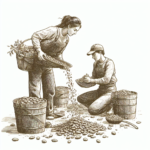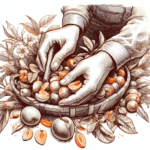AliExpress Nut Roller

Say goodbye to tedious nut collection with the AliExpress Nut Roller, your ultimate companion for effortless harvesting. Designed with functionality, ...
Read more
Select Harvests is Nurturing Australia’s Largest Almond Legacy

As the largest almond grower and processor in Australia, Select Harvests has played a pivotal role in shaping the nation’s ...
Read more
Bandicoot Nursery has been Cultivating Almond Orchard Dreams Since 1985

Established in 1985, Bandicoot Nursery has earned a solid reputation as a trusted supplier of Deciduous Fruit & Nut and ...
Read more
Nutrition and Health Benefits of Almonds

Almonds, often hailed as nature’s powerhouse, are not just a delightful snack but a nutritional treasure trove. Packed with essential ...
Read more
Harvesting Almonds, your Commercial Grower’s Guide to Success in Australia

Embarking on the journey from blossoms to harvest, almond cultivation is a dance with nature, where timing, precision, and efficiency ...
Read more
The Vital Role of Honeybees in Almond Pollination

In the intricate world of almond cultivation, a silent collaboration takes place each flowering season, and at the heart of ...
Read more
Understanding Almond Shell Types (A Guide to Varieties in Australia)

Almonds, known for their delicate taste and myriad applications, come in a variety of shell types that significantly impact their ...
Read more
Navigating the Flourishing Landscape of the Australian Almond Industry

Here we unravel the promising opportunities within the thriving Australian Almond Industry. As investors, you play a pivotal role in ...
Read more







